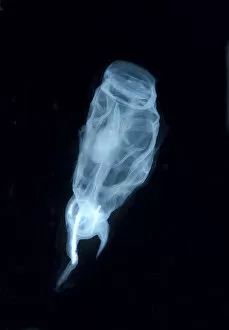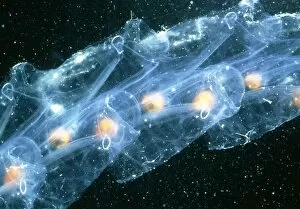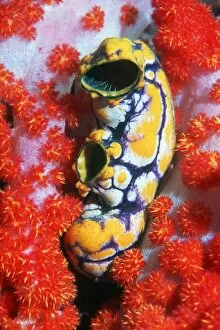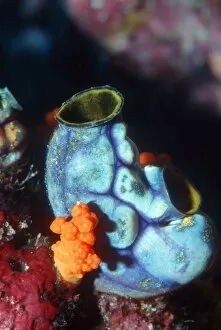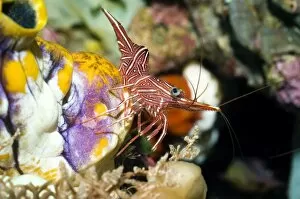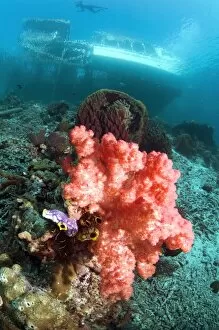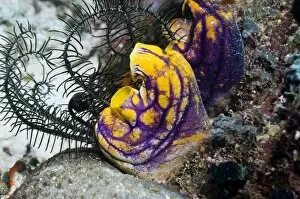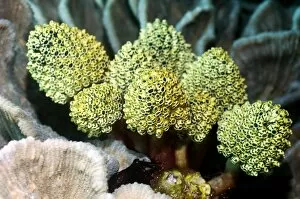Urochordata Collection
Urochordata, also known as sea squirts or salps, are fascinating marine creatures found in the Japan Sea
All Professionally Made to Order for Quick Shipping
Urochordata, also known as sea squirts or salps, are fascinating marine creatures found in the Japan Sea, specifically in the Primorsky Krai region of the Russian Federation's Far East. Among them is the remarkable species Cyclosalpa bakeri, commonly referred to as Two Bakers cyclosalps. These unique organisms form colonies that consist of numerous individuals called zooids. The colony of Bakers cyclosalpa showcases their intricate interconnectedness and cooperative behavior. These salps play a vital role in maintaining the ecological balance of their habitat. The Japan Sea provides an ideal environment for these urochordates to thrive. With its rich biodiversity and favorable conditions, it serves as a haven for various marine life forms including sea squirts like Polycarpa aurata. These vibrant creatures add splashes of color to the underwater landscape with their golden hues. In close proximity to these stunning sea squirts lies another intriguing sight - an ink-spot sea squirt alongside a crinoid. This symbiotic relationship between two distinct species demonstrates nature's ability to foster interdependence among different organisms. Salps themselves are captivating creatures that possess transparent bodies resembling gelatinous tubes or barrels. They gracefully propel themselves through water by contracting and expanding their muscular structure, creating mesmerizing movements reminiscent of underwater ballet. Sea squirts have earned their name due to their ability to expel jets of water when disturbed or threatened – a defense mechanism that resembles squirting water from a bottle-like structure present within their bodies. As we delve into the world beneath our oceans' surface, we uncover countless wonders such as Urochordata - enchanting beings that remind us of nature's boundless beauty and complexity.


